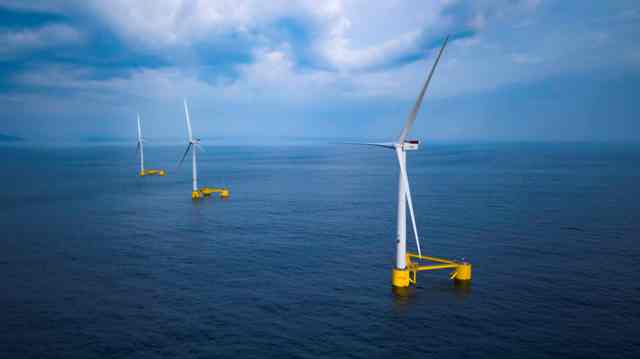The offshore wind industry confronts turbulent times, potentially altering the landscape of large-scale energy projects and their funding, according to the latest findings in the EY Renewable Energy Country Attractiveness Index (RECAI).
Despite its pivotal role in achieving net-zero emissions, offshore wind has weathered a challenging 12 months, grappling with a strained supply chain and surging costs. Notably, global project expenses have surged by 39 percent since 2019, projecting an approximate additional US$280 billion in capital expenditure for the sector over the next decade.
To reach 2030 forecasts, an average capacity of 35GW will need to be installed annually worldwide; less than 9GW of new offshore wind has so far been added in 2023.
Supply chain problems have resulted in global project costs rising by 39% since 2019.
The UK’s fifth allocation round in September — using a contract for difference (CfD) model to agree the price to sell electricity — failed to attract a single bidder for offshore wind. The “strike price” set by the UK government was not enough to entice developers to bid.
Some auctions for US lease areas have also run out of steam. Those off the East Coast attracted record-breaking prices in February 2022, but the more recent Gulf of Mexico auctions attracted very low levels of developer interest.
Germany’s first dynamic offshore wind auctions, in July — for the rights to build, using a “buy now pay later” format — attracted bids totaling €12.6b (US$13.46b) for projects in the North Sea and the Baltic Sea. Other markets have also successfully concluded offshore wind tenders at reasonable prices, including Ireland, the Netherlands and Lithuania.
Amid this scenario, an anticipated 80 percent of the 15 markets aiming for offshore wind targets by 2030 are forecasted to fall short of their goals. Of significance, the UK has relinquished its leading position as the most appealing country for hosting offshore wind projects, sliding three places to the 7th position on the Index overall. The UK’s fifth allocation round (AR5) witnessed a significant setback in September 2023, as the maximum strike price of £44 (US$54) per megawatt hour failed to incentivize developer bids. This setback hampers the UK’s aspiration to achieve 50GW of offshore capacity by 2030.
Arnaud de Giovanni, EY Global Renewables Leader, highlighted the industry’s critical juncture, stating, “Offshore wind faces a turning point amidst the urgent need for investments to meet global net-zero targets. To fulfill its decarbonization role, mitigating risks beyond developers’ control is crucial, ensuring reasonable returns on their investments.” Giovanni emphasized the need for standardized technologies to ease supply chain tensions and advocated for streamlined government strategies to expedite consenting processes, minimizing risks between offtake agreements and investment decisions.
Ben Warren, EY Renewables Corporate Finance and RECAI Chief Editor, urged governments to reconsider auction formats for offshore wind contracts, suggesting a departure from cost-only auctions. He proposed incorporating diverse factors like environmental considerations and job creation, which could bolster the supply chain, enhance project deliverability, and benefit society at large.
In the RECAI rankings, Nordic countries saw upward shifts, with Denmark, Sweden, and Norway climbing two, three, and five places, respectively. Conversely, Japan slipped three places to 13th position due to lagging solar and wind deployment despite its renewable commitments. Similarly, Chile dropped two spots to 16th position, grappling with solar curtailment issues despite setting new battery storage targets.
Baburajan Kizhakedath

